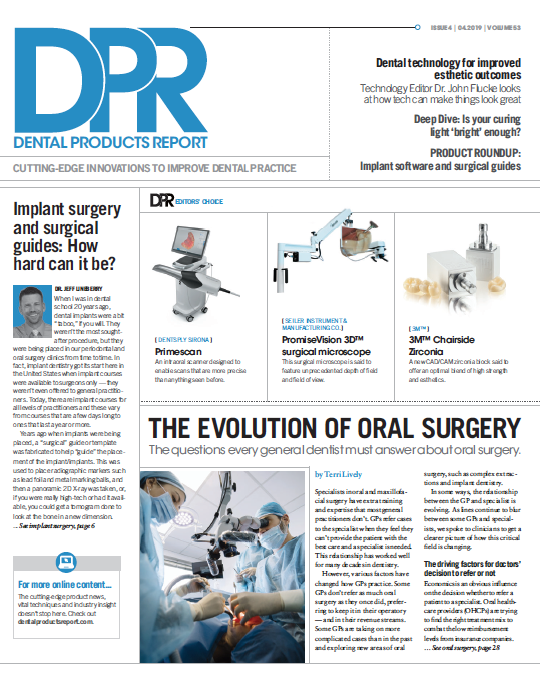Evaluating the Cranberry Smart Dam
Why Contemporary Product Solutions gave these premium rubber dams a 5-Diamond rating.

In the early days of dentistry, practitioners had few ways of controlling the oral environment during restorative work. The instruments and materials available to the dentist of the 1860s to 1930s were used for lengthy procedures during which a completely dry and clearly visible field was needed. The rubber dam was developed for this purpose.
Contemporary Product Solutions recently conducted an evaluation soliciting the opinions of 12 dental practices for more than 62 uses after using the Smart Dam from Cranberry.
Smart Dam premium dental dams
Smart Dam (Cranberry) are premium dental rubber dams that demonstrate unparalleled tensile strength for uncompromising tear resistance. With low modulus elasticity and uncompromising tear resistance, studies have proven that the Cranberry Smart Dam has a 950 percent elongation at break, with 98 percent less latex protein and 80 percent less powder.
Available in a non-latex spearmint-scented purple color, a latex spearmint-scented green color, and an unscented latex blue color with medium gauge thickness, the high contrasting colors offer optimal visual acuity.
More from the author: How to improve patients' oral health in one step
Evaluation results

When asked, most dental assistants who conducted the evaluation said they only place rubber dams about 8 percent of the time in their practices. While conducting the study, we found that after reintroducing the technique, it allowed the assistants to place the dam properly, which allowed more practices to help with the evaluation. All evaluators commented the refresher in steps allowed them to utilize the Smart Dam for other clinical applications in the practice.
The Smart Dam was used for the following procedures: 54 percent used it for direct composite placement, 6 percent for endodontic procedures, 22 percent for delivery of restorations, and 18 percent for recorded miscellaneous procedures.
Seventy-two percent of the evaluators said the Smart Dam, due to its elasticity and tear strength, tooth-arch size, rotation and size of the tooth in harder areas to isolate, would now be the dam of choice for their practice. Sixty-two percent of the evaluators said their biggest complaint was getting the dam completely set up and finding there are holes or punctures in the dam itself. Ninety-nine percent of evaluators commented that they loved the colors of the dam and that it was easy on the eye for contrast. Eight-four percent said their patients complimented on the experience applying the dam and after placement were very comfortable.
Conclusion
All the dental assistants surveyed stated that the most common reasons for not using a rubber dam were “inconvenience” and that “it was unnecessary.”
Time and cost are very important to all dental practices. The time saved by operating in a clean field with good visibility compensates for the time spent applying the rubber dam. The Cranberry Smart Dam received a perfect 5 Diamond rating from the CPS team of assistant evaluators.

Product Bites – November 10, 2023
November 10th 2023The weekly new products podcast from Dental Products Report is back. With a quick look at all of the newest dental product launches, Product Bites makes sure you don't miss the next innovation for your practice. This week's Product Bites podcast features new launches from Amann Girrbach, DMG, Pac-Dent, and ASI Dental Specialties. [4 Minutes]